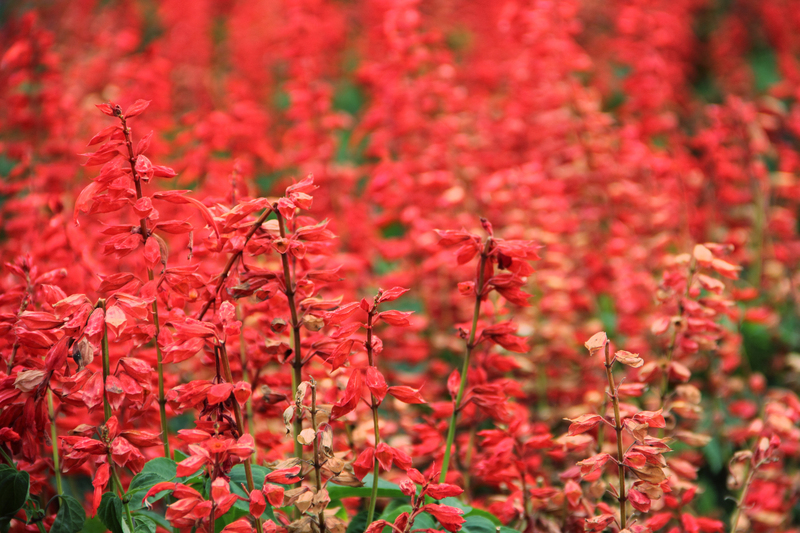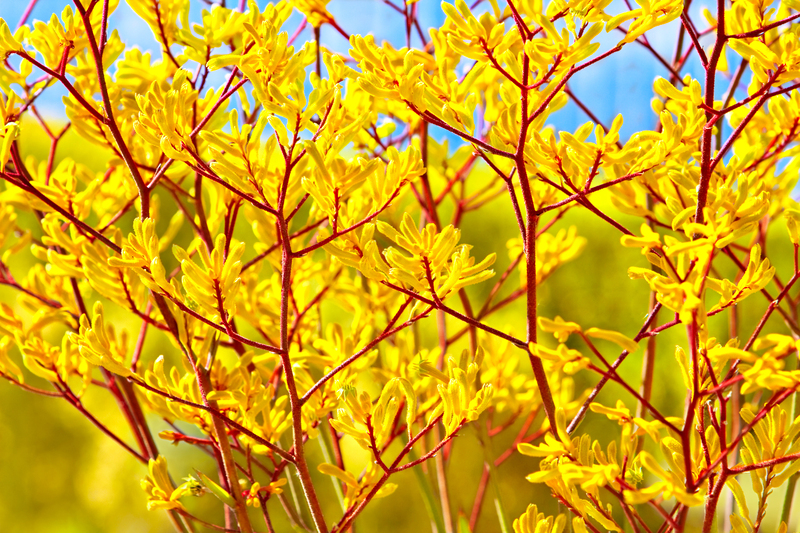Evergreen Elegance: The 10 Best Trees for Petite Garden Spaces
Are you dreaming of a lush, vibrant landscape, but only have a small garden or miniature outdoor space to work with? Fear not! Selecting the right compact trees can turn your petite plot into an enchanting display of evergreen elegance and year-round visual interest.
In this comprehensive guide, we explore the 10 best evergreen trees for small garden spaces--each one ideal for tight quarters, pots, and courtyards. Discover species that deliver bold color, textured foliage, and even seasonal blooms, fitting perfectly in any tiny paradise.
Why Choose Evergreen Trees for Small Gardens?
Evergreen trees are nature's architects, shaping your garden with their consistent foliage and structure throughout all seasons. For condensed yards, compact evergreen trees bring not only visual interest but also privacy, wind protection, and a sense of tranquility.
- Year-Round Interest: Evergreens keep their leaves or needles all year, so your garden stays green even in winter.
- Low Maintenance: Most small evergreen trees need little pruning and are unfussy about care.
- Screening and Privacy: Dense foliage provides natural barriers without needing bulky fences.
- Wildlife Haven: Evergreens offer nesting sites and shelter for birds and pollinators.
Let's delve into the top 10 trees that embody evergreen elegance for petite gardens.

1. Dwarf Japanese Maple (Acer palmatum 'Shaina')
The Dwarf Japanese Maple is a sophisticated choice for small garden spaces. 'Shaina' is especially celebrated for its compact, rounded habit--growing just 4-6 feet tall and wide. Its deeply lobed scarlet leaves create a ruby splash amidst green companions, and the tree thrives in partial shade.
- Evergreen feature: Vibrant, long-lasting foliage--even in cooler months.
- Why it's ideal: Stunning color, small stature, and formal shape suit tight borders, patios, and containers.
Planting Tips:
- Position in dappled sunlight to protect from harsh rays.
- Use rich, well-draining soil and water regularly in summer.
2. Boxwood (Buxus sempervirens)
For centuries, boxwood has been the backbone of elegant gardens. Its dense, evergreen foliage tolerates heavy pruning, making it perfect for topiaries or tidy geometric shapes. Most boxwood varieties max out at 4-6 feet.
- Evergreen feature: Glossy, deep green leaves that are reliable year-round.
- Why it's ideal: Perfect for hedges, borders, and even as sculptural features in tiny gardens.
Planting Tips:
- Plant in partial to full sun and keep soil moist but not waterlogged.
- Prune in late spring for a compact shape.
3. Dwarf Alberta Spruce (Picea glauca 'Conica')
Add a classic conifer silhouette to your petite garden with the Dwarf Alberta Spruce. Poised like a miniature Christmas tree, this slow-growing evergreen tops out at around 6-8 feet and forms a dense, pyramidal shape.
- Evergreen feature: Short, soft, blue-green needles maintain their color all year.
- Why it's ideal: Works well as a living accent, entryway statement, or container centerpiece.
Planting Tips:
- Sun-loving; plant where it will get 6+ hours of direct sun.
- Protect from hot, drying winds and water during dry spells.
4. Olive Tree (Olea europaea)
Bring Mediterranean charm to your tiny garden with an olive tree. Compact and slow-growing, olive trees flourish in pots and sunny spots, producing slender, silver-green leaves and, if you're lucky, a few tasty fruits!
- Evergreen feature: Silvery foliage adds a luminous glow to any balcony or courtyard.
- Why it's ideal: Drought-tolerant and suitable for both modern and rustic designs.
Planting Tips:
- Place in the sunniest spot available and use a gritty, free-draining compost if potting.
- Prune lightly to maintain a bushy, compact form.
5. Holly (Ilex aquifolium 'Golden King')
With its festively variegated leaves and bright red berries, holly is a traditional favorite--yet it's also adaptable to small garden designs. The cultivar 'Golden King' is slow-growing, compact, and easily trimmed.
- Evergreen feature: Lustrous dark green leaves edged in gold, with potential for winter display berries.
- Why it's ideal: Excellent for privacy screening and adding color to dull corners.
Planting Tips:
- Pflant in sun or shade; tolerates a variety of soils.
- Choose a male pollinator nearby for berry production.
6. Japanese Yew (Taxus cuspidata 'Nana')
Known for its refined shape and dense, dark green needles, the Japanese yew is a standout among evergreen trees for narrow spaces. The 'Nana' variety rarely exceeds 3 feet tall yet can be clipped to make compact mounds or columns, fitting for formal mini landscapes.
- Evergreen feature: Rich, persistent foliage that's ideal for structure and contrast.
- Why it's ideal: Shade tolerant, wind resistant, and shaped for tight squeezes.
Planting Tips:
- Thrives in partial to deep shade.
- Keep soil moist but well-draining; avoid waterlogging.
7. Dwarf Lemon Cypress (Cupressus macrocarpa 'Goldcrest')
This cheerful, columnar conifer is celebrated for its chartreuse-yellow foliage and citrus scent when crushed. Dwarf Lemon Cypress grows to only 3-5 feet in pots, bringing height and fragrance to even the tiniest terrace or balcony.
- Evergreen feature: Vivid yellow color and a narrow, vertical form for accent planting.
- Why it's ideal: Hardy in containers and often used as a living Christmas tree indoors or out.
Planting Tips:
- Provide full sun and regular water during the growing season.
- Protect from cold winter winds in exposed locations.
8. Camellia (Camellia japonica)
Famed for their magnificent, rose-like blooms that emerge in late winter and early spring, Camellias are evergreen shrubs that can be trained as small trees. Their glossy, leathery leaves look beautiful year-round.
- Evergreen feature: Shiny green leaves and eye-catching flowers in pink, red, or white.
- Why it's ideal: Works as a specimen tree, in woodland plantings, or large pots by a doorway.
Planting Tips:
- Thrives in partial shade with acidic, well-draining soil.
- Keep roots cool and mulch annually.
9. Amelanchier (Amelanchier alnifolia)
Also known as serviceberry or Juneberry, this delightful small tree delivers year-round interest: delicate white spring flowers, edible berries in summer, and vivid autumn color. Some cultivars are semi-evergreen in milder climates.
- Evergreen feature: Dense, twiggy habit provides structural winter interest; some varieties hold leaves late into winter in temperate zones.
- Why it's ideal: Multi-season color and wildlife-friendly dimension in a compact form--reaching 6-8 feet high.
Planting Tips:
- Happy in full sun to light shade.
- Moist, mildly acidic soils yield the best berry production.
10. Little Gem Magnolia (Magnolia grandiflora 'Little Gem')
Radiating class, the Little Gem Magnolia is a dwarf variety of the Southern Magnolia, maxing out at 8-10 feet tall. It offers oversized, fragrant white blossoms, deep green, glossy leaves, and an upright, narrow habit.
- Evergreen feature: Lustrous, year-round foliage with coppery undersides for extra contrast.
- Why it's ideal: Exquisite as a specimen tree--one of the ultimate compact evergreen trees for small gardens.
Planting Tips:
- Suited to full sun to partial shade; avoid extreme drought or standing water.
- Mulch and fertilize annually for most prolific flowering.
How to Choose the Right Evergreen Trees for Small Gardens
Selecting the perfect petite evergreen tree involves more than just picking a favorite. Keep the following tips in mind to create a harmonious, balanced landscape:
- Consider final size: Always check the mature height and spread to ensure trees won't quickly outgrow their allotted space.
- Shape and texture: Mix columnar, rounded, and weeping forms for architectural variety and visual intrigue.
- Exposure and soil: Different trees have unique requirements for sun, shade, and soil type.
- Maintenance needs: Some evergreens need occasional pruning or special soil amendments.
- Special features: Fragrant flowers, colorful berries, or unusual bark can add unexpected delight.
Expert Tip:
When planting in containers, choose trees with dwarf or slow-growing rootstocks and repot or root-prune every 2-3 years to avoid becoming pot bound.
Caring for Evergreen Trees in Petite Spaces
To keep your compact evergreens healthy and striking, follow these key care guidelines:
Watering:- Young trees need consistent moisture--especially in hot or windy weather.
- Established evergreens in the ground can tolerate brief dry spells, but those in containers dry faster and should be checked daily in summer.
- Apply slow-release, balanced fertilizer in spring. Acid-loving species (like camellias) may need ericaceous feed.
- Shape trees lightly once a year to maintain compactness and remove any dead or crossing branches.
- Always use sterilized, sharp tools to prevent disease.
- Monitor regularly for early signs of leaf spot, scale, or spider mites, especially in crowded plots.
- Provide good airflow and avoid overwatering to deter fungal problems.

Designing with Evergreen Trees in Small Gardens
Evergreen trees offer both backdrop and focal point within limited space, so use them wisely:
- Single Specimens: Let one dramatic tree shine in a pot or central bed.
- Hedging Lines: Short evergreens like boxwood or yew can edge walkways or divide functional areas.
- Multi-Season Displays: Layer trees with perennials and bulbs for continuous interest.
- Vertical Accents: Columnar types draw the eye skyward, lending the illusion of a larger garden.
Creative Idea:
Interplant small evergreen trees with early spring bulbs beneath and trailing annuals in pots for color and texture at all levels.
Conclusion: Bring Evergreen Elegance to Your Petite Paradise
With careful selection and placement, evergreen trees for small gardens can transform even the tiniest space into a restful green retreat. From the refined hues of Japanese Maple to the classic charm of Boxwood and the fragrant delight of Magnolia, your options for year-round greenery are endless--even with limited square footage.
Start with these 10 best trees for petite spaces, tailored for both novice and experienced gardeners seeking evergreen elegance. With thoughtful care and design, your miniature landscape will deliver beauty, privacy, and interest every month of the year.
Frequently Asked Questions
- Which evergreen trees grow best in pots? Dwarf Alberta Spruce, Olive trees, and Japanese Maples are all well-suited to container life.
- How can I prevent my small evergreens from getting too large? Choose slow-growing or dwarf varieties, prune annually, and restrict root space with pots if necessary.
- Will evergreen trees survive in shade? Japanese Yew, Camellias, and Holly thrive in shaded areas where many other trees struggle.
Ready to cultivate your own pocket of evergreen elegance? Select from these top compact trees to ensure your small outdoor space remains lively, lush, and inviting all year round!